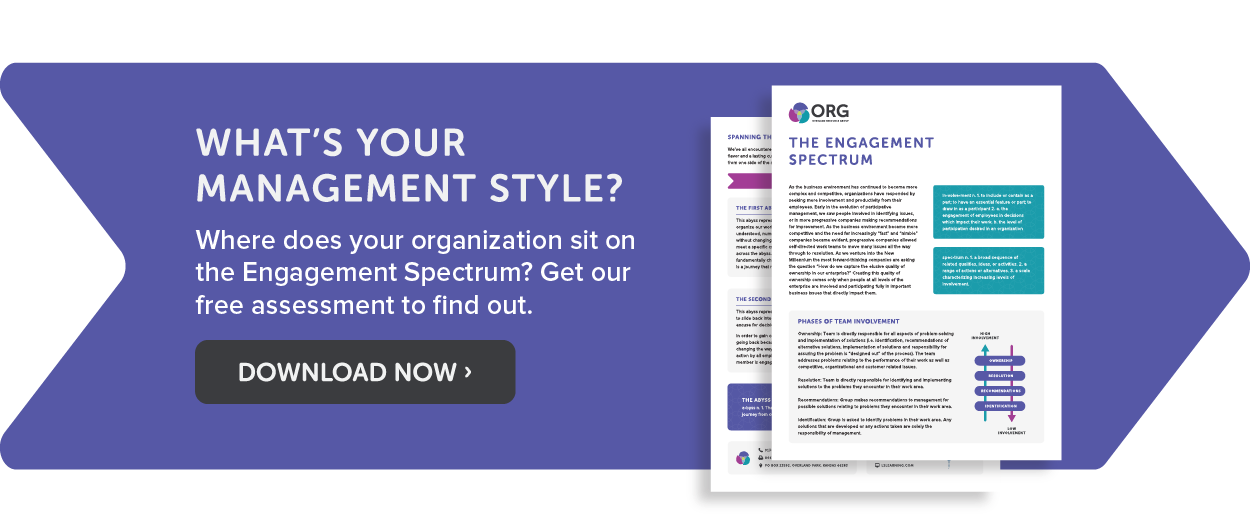
For those of us in the Leadership and Organization Transformation business the first 100 days of any new administration are vital.
It's an interesting time to reflect on what happens in any system when a new leadership team takes over. Franklin Roosevelt may have originated the idea of the First 100 Days in 1933, but in my experience, it’s quite a good milestone for any type of enterprise.
Early days under new leadership will set the tone and energy for everything that follows and may largely determine the ultimate success of any transformation. At Overland Resource Group, we routinely conduct 30-60-90 day reviews after major organizational events. A new executive team certainly qualifies.
A quick Google search yields many “top things to do in the first 90-100 days of taking over” lists. Most of them focus on proving yourself as the new leader through quick wins, financial returns, and proof of an ability to turn the business around or take it to a new level. All good things.
Since our consulting focus is on business results through engagement and collaboration, however, a question came to mind as I surveyed these lists:
Do you need the full commitment of the current workforce to achieve your mandate going forward?
Except in rare circumstances, the answer to this question is likely to be a resounding “yes”. This is especially true of any enterprise that presents an on-going and intimate face to the customer, in retail, hospitality, and airlines, for example. The commitment of the employees, especially those in customer facing roles, has the power to make or break your goals as a new leader, or at least make achieving them slow,
To garner the full commitment of the incumbent workforce the following First 100 Days suggestions come to mind based on several decades of watching and coaching new leaders as they step into the limelight. They hold true whether the new leader is tasked with a major turn-around or simply helping the organization maintain its current direction.
Regarding the current employees, including leaders, take care to do these 7 things.
1. Honor their dignity.
Show respect in how you treat them and how you talk about them to others. This is the cardinal rule. Regardless of how you or anyone outside the system feels about the current performance of the organization the people inside it deserve to be treated with dignity. First because they have intrinsic worth as human beings, and second because they have earned the right to be exactly who and where they are based on the journey that brought them to this moment.
It may be counter-intuitive but starting by honoring the dignity of the employees does not hamper their willingness to change or renew. On the contrary, as Donna Hicks points out in her excellent book, Dignity: The Essential Role It Plays in Resolving Conflict: “A mutual sense of worth also provides the safety necessary for both parties to extend themselves, making continued growth and development possible.”
2. Suspend your assumptions.
Whatever you think you may know about the people in the organization, who they are, how they feel about things, leave those assumptions in the visitor’s lounge.
- Suspend your assumption that people aren’t willing to change or support what needs to be done
- Suspend your assumption that you know what needs to be done.
- Suspend your assumption that people don’t see the same things you do or that they do
Heck, maybe try suspending all your assumptions and just go in ready to observe, learn, understand, and maybe then and only then, challenge the status quo. At least only then will you be able to authentically lay your mandate up against the true picture of the current situation.
Ask questions. Be curious; stay curious.
3. Get to know the people (and get them start getting to know you).
I have often had new leaders and incumbent employees exchange and discuss a very simple and identical set of written questions.
- Things you can expect of me
- Things I’d like you to know about me
- Things I expect of you
- Things I’d like to know about you
These can be shared off-line and discussed one-on-one or even in larger settings using large-scale group techniques.
Getting to know people, even demonstrating the desire to get to know people, starts to build trust. It’s harder to distrust or dismiss the known; easier with the unknown. Coming off the first 100 days with a modicum of trust between you and the people is a healthy return on your investment in building rapport.
4. Find out what makes this professional community tick.
Over the course of conducting hundreds of organizational assessments, especially regarding culture, change readiness, and labor-management relations, we in ORG have come to recognize that at any given point in time there is a core of very specific energy that exists within the collective hearts and minds of the people in an organization.
This energy is driven by a combination of their professional identity and the set of historic circumstances that have brought them to the current moment.
Mechanics and engineers, for example, are pre-disposed to solve problems, and they take great pride in taking something that is messed up and modifying into something functional and cool. This core energy, rather than forming resistance to new leadership and direction, can become a powerful force for renewal and commitment if it is identified and then tapped with the right intention and process.
5. Make a clear and compelling Case for Change.
People are usually more than willing to commit to a new direction, but they need to believe there’s a reason behind the change and that it matters. Perhaps no more important task awaits a new leader than crafting the narrative and communication vehicles that make this case.
An effective Case for Change includes:
- History up to this point
- Where things stand
- Forces affecting the future
- Consequences of not making the necessary changes
- Opportunities that exist if the changes are successfully made
- Line of sight between the opportunities and their personal role and identity
A powerful case for change contains an emotional appeal and dramatic supporting data. Lay out the personal connection between your employees and the case for change. Why should they care? What’s in for them? I have seen people in organizations do things they would have deemed impossible, even to the extent of willingly changing their own roles, when the Case for Change was compelling enough.
Chances are that the Case of Change will continue to be fuel for sustaining velocity well past the 100 days. And that it will take multiple telling for the story to take hold.
6. Invite people in.
If you want people to show up at the party, don’t forget to extend the invitation. If new leaders have done steps 1-5 well, people will be eagerly waiting to be asked to dive into the new direction with their sleeves rolled up and ready for action. They will be committed. If the invitation is skipped they’re likely to feel taken for granted, used, misled, or demeaned; none of which is likely to create the necessary commitment.
What you’re inviting people into isn’t your plan, you’re inviting them to be engaged in building the plan, everyone’s plan. As Harry Gordon Selfridge said, “The boss, says ‘Go’. The leader says ‘Let’s go’ “
7. Engage the people in breakthroughs.
Once a Case for Change has been successfully communicated, people may be ready, even within 100 days, to identify and pursue breakthroughs. A breakthrough is a change in process or relationship that exponentially shifts the performance of the organization. There are proven, carefully designed approaches for finding and realizing breakthroughs.
In the most effective leadership shift I’ve ever been involved in the new leaders engaged every leadership tier, every department, and every field office in identifying things that would constitute a breakthrough for them, gave each team the tools to work the breakthrough, and then empowered the teams to carry them through. The organization took on everything from the budgeting process to conflicts between departments. And not coincidentally, because the Case for Change had been believed and people were directly involved in the breakthrough process, all the breakthroughs achieved were precisely aligned with the new needs of the organization, accelerating progress in the desired direction.
When these steps are followed in the first months of a new leadership, growth occurs.
The work I and my colleagues do at Overland Resource Group has demonstrated time and time again that when these steps are followed in the first months of a new leadership team, the people will not only become committed to the desired changes, they will become passionate advocates for the transformed organization, selling the changes not only to their peers but to customers and all stakeholders.
What about your experience? What would you add to this list?

Read other articles by Marc Bridgham.
- Want Engaged Employees? Start with Fairness.
- 5 Lessons From Using DISC Heat Maps On Us
- Don' Let Honest Mistakes Kill Good Labor Management Relationships
- Involving Union Leaders in the Budget Cycle Reaps Bottom-line and Relational Impact


